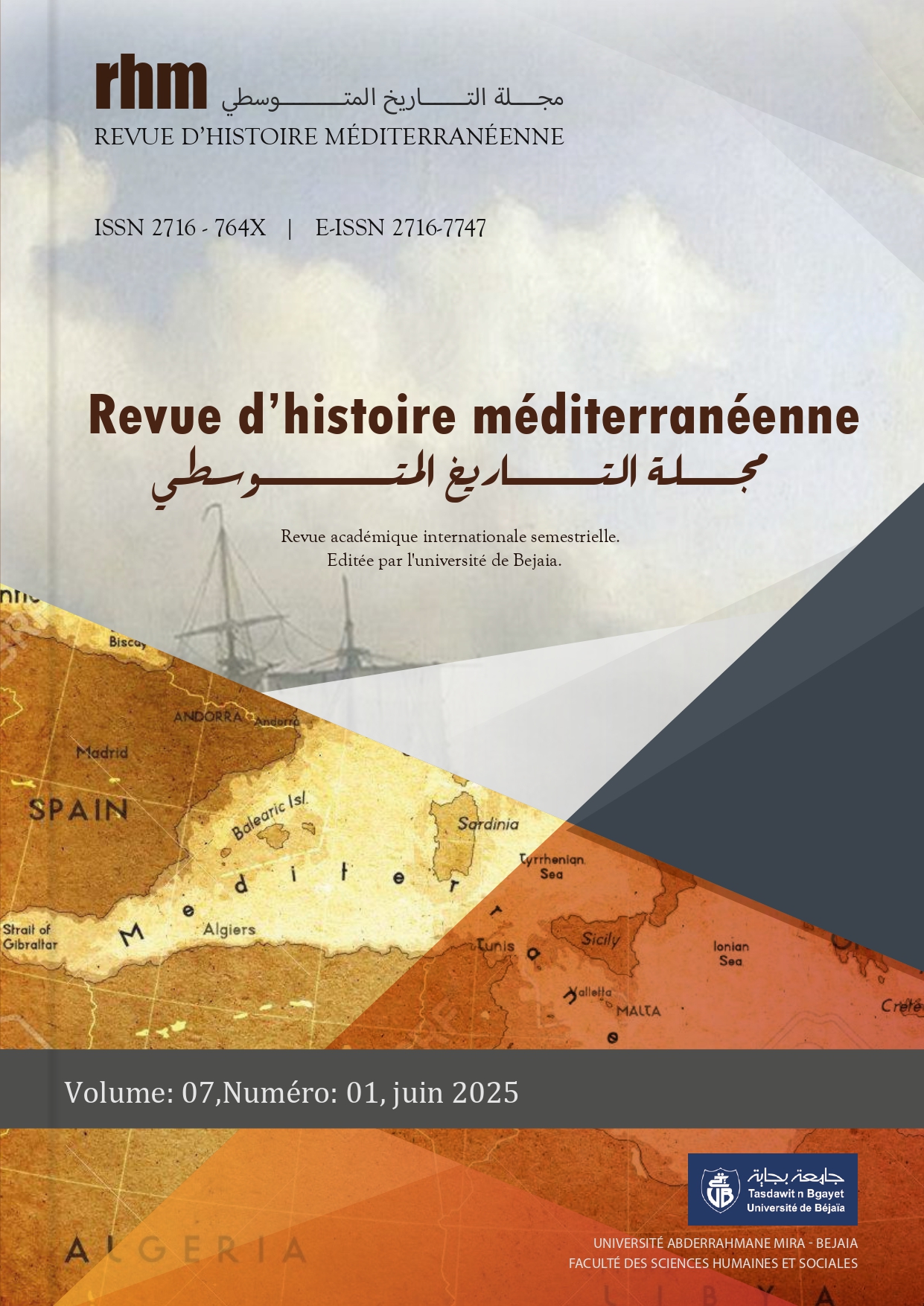La présence militaire à l’ouest de la Numidie : nouvelles inscriptions d’Henchir el Hassane.
The military presence in western Numidia: new inscriptions in Henchir el Hassane.
Résumé
Trois inscriptions étudiées dans cet article, dont deux inédites, découvertes depuis 1940 à Henchir el Hassane, à l’ouest de Diana Veteranorum (Zana) en Numidie, attestent l’existence au troisième siècle d’un poste militaire occupé par des cavaliers de l’ala Flauia ou du corps des singulares. L’objectif de cette étude est d’examiner ces inscriptions afin de caractériser avec précision la fonction et l’organisation du poste militaire romain en activité durant cette période. Par ailleurs, cette recherche s’inscrit dans une perspective plus globale visant à reconstituer le système de contrôle et de sécurisation mis en place par l’administration impériale romaine à la frontière Numido-Maurétanienne, une zone stratégique soumise aux risques d’intrusion et d’instabilité politique.
L'organisation militaire romaine dans les provinces africaines aux IIᵉ et IIIᵉ siècles reposait sur un dispositif complexe de surveillance et de défense visant à garantir la stabilité des territoires frontaliers. Dans ce contexte, la région située entre la Numidie et la Maurétanie Césarienne occupait une position stratégique, exposée aux incursions de groupes tribaux et aux fluctuations des dynamiques politiques locales. Comment les récentes inscriptions découvertes à Henchir el Hassane contribuent-elles à renouveler notre compréhension du passage d’un système de garnisons fixes à une approche plus mobile et flexible, articulée autour d’un réseau de surveillance adapté aux réalités du terrain ?
Cette recherche adopte une approche pluridisciplinaire combinant épigraphie, cartographie, topographie et histoire militaire afin d’approfondir la compréhension du dispositif défensif romain en Afrique du Nord.
Le corpus de cette étude repose principalement sur un ensemble d’inscriptions attestant la présence et l’organisation militaire romaine dans la région aux IIᵉ et IIIᵉ siècles. Le premier document, découvert vers 1940, mentionne un duplicarius de l’ala Flauia, stationné aux fauces Vazub sous le règne de Sévère Alexandre (222-235). Ensuite, une base inédite mise au jour en 1952 évoque un optio appartenant au corps des singulares, suggérant le rôle particulier attribué à ces unités d’élite dans le dispositif militaire régional. Enfin, une inscription exhumée en 1980 cite M. Sextilius Donatus, à la fois duplicarius et optio des equites singulares, renforçant ainsi l’hypothèse d’un réseau de surveillance structuré et spécialisé. Ces sources primaires sont complétées par des documents connexes, notamment une inscription trouvée à El Hassi Tamahrit, ainsi que les indications cartographiques de la Table de Peutinger, qui signale la présence de postes fortifiés (praesidium, centenarium) dans cette zone frontalière.
Les analyses menées confirment avec certitude l’existence d’un poste militaire romain à Henchir el Hassane, actif durant une grande partie du IIIᵉ siècle. Ce site était occupé par des détachements de cavalerie d’élite, issus à la fois de l’ala Flauia et du corps des singulares, suggérant une présence stratégique liée aux impératifs de contrôle territorial. Les nouvelles inscriptions étudiées révèlent une évolution substantielle des pratiques de sécurisation romaines dans cette région. Elles mettent en évidence une adaptation progressive du système défensif, caractérisée par une transition vers une stratégie de mobilité et de renseignement, privilégiant une surveillance dynamique plutôt qu’une concentration de forces au sein de garnisons fixes.










